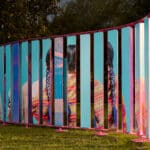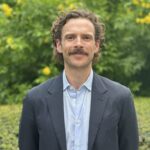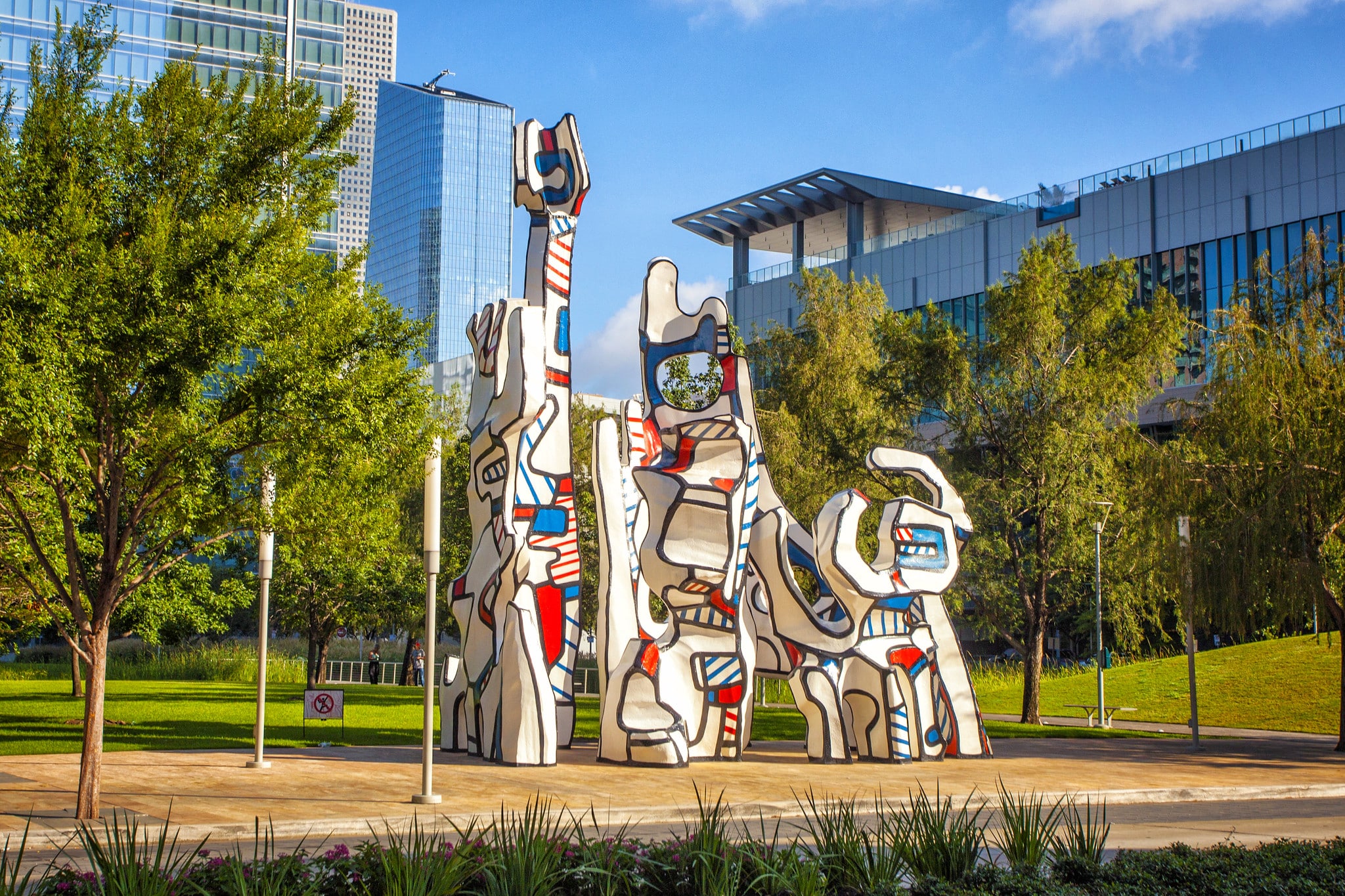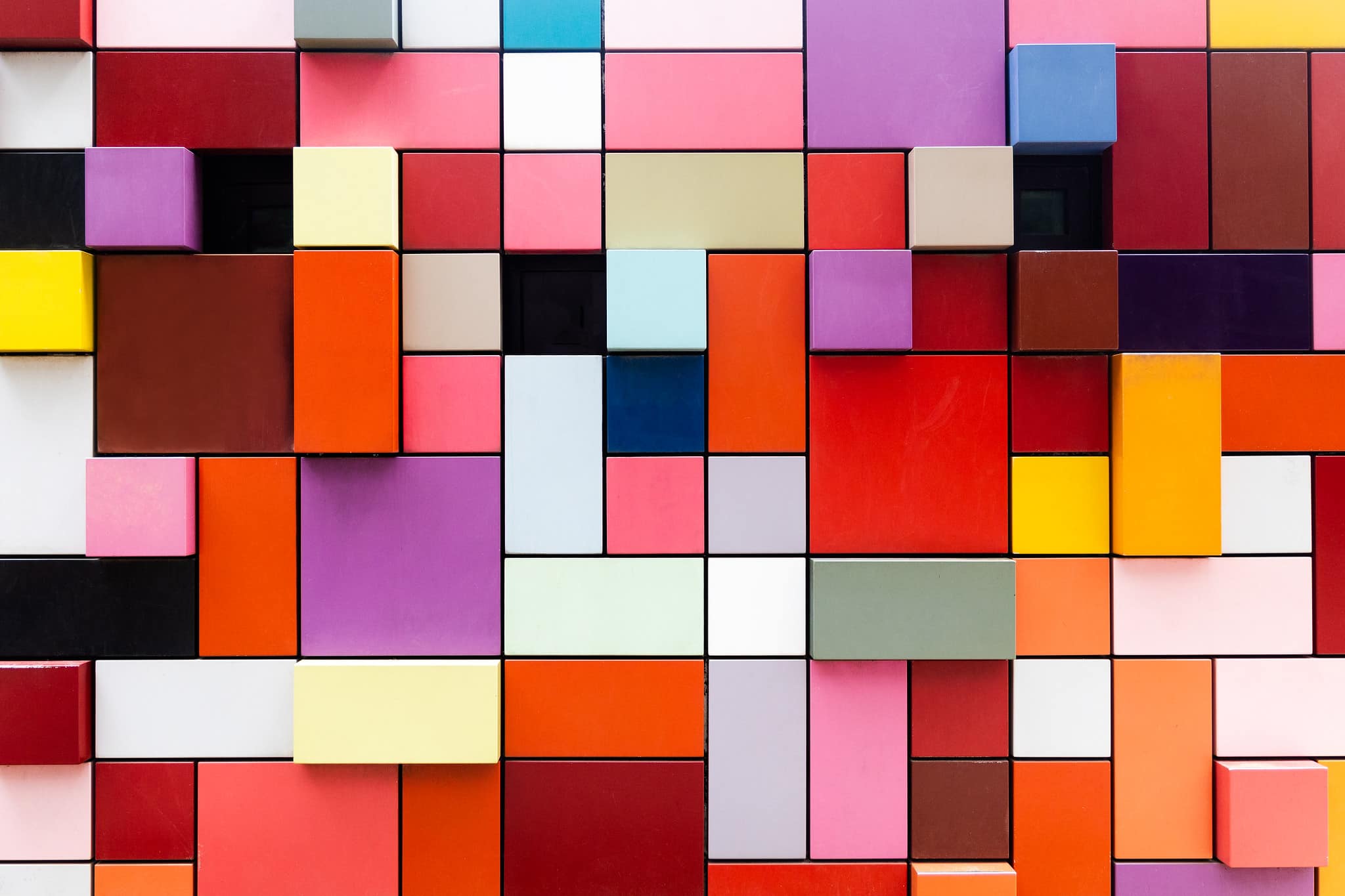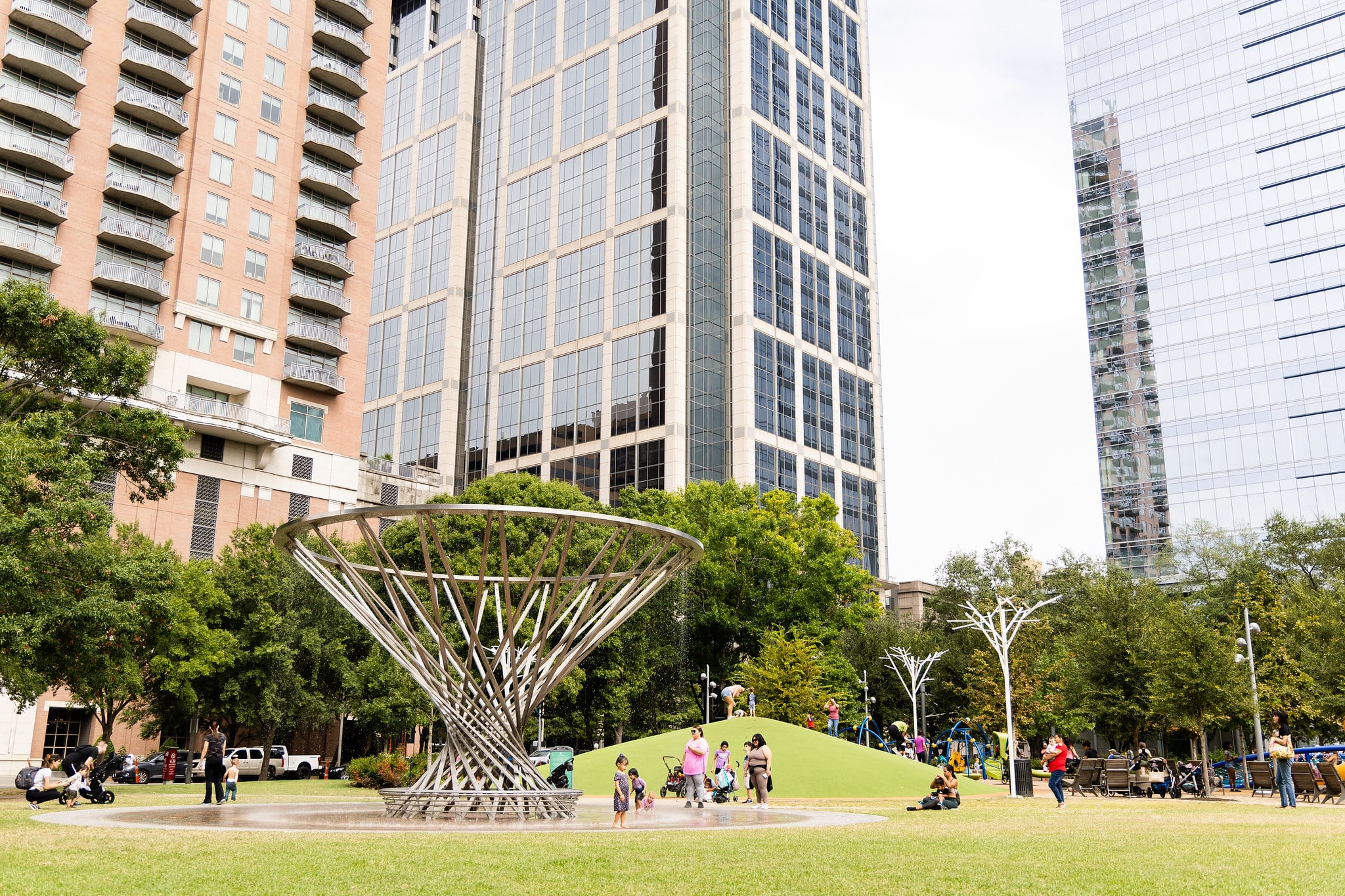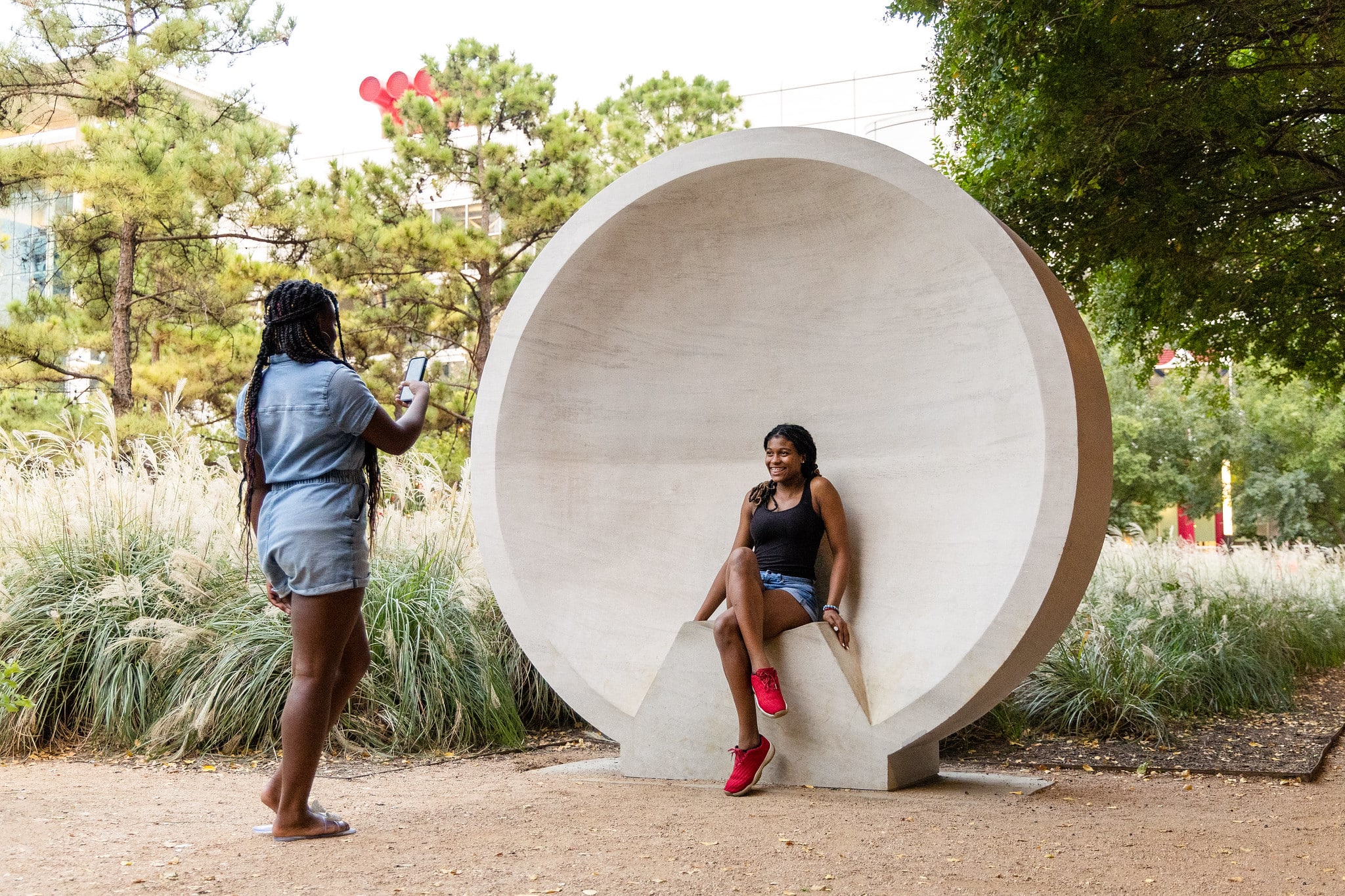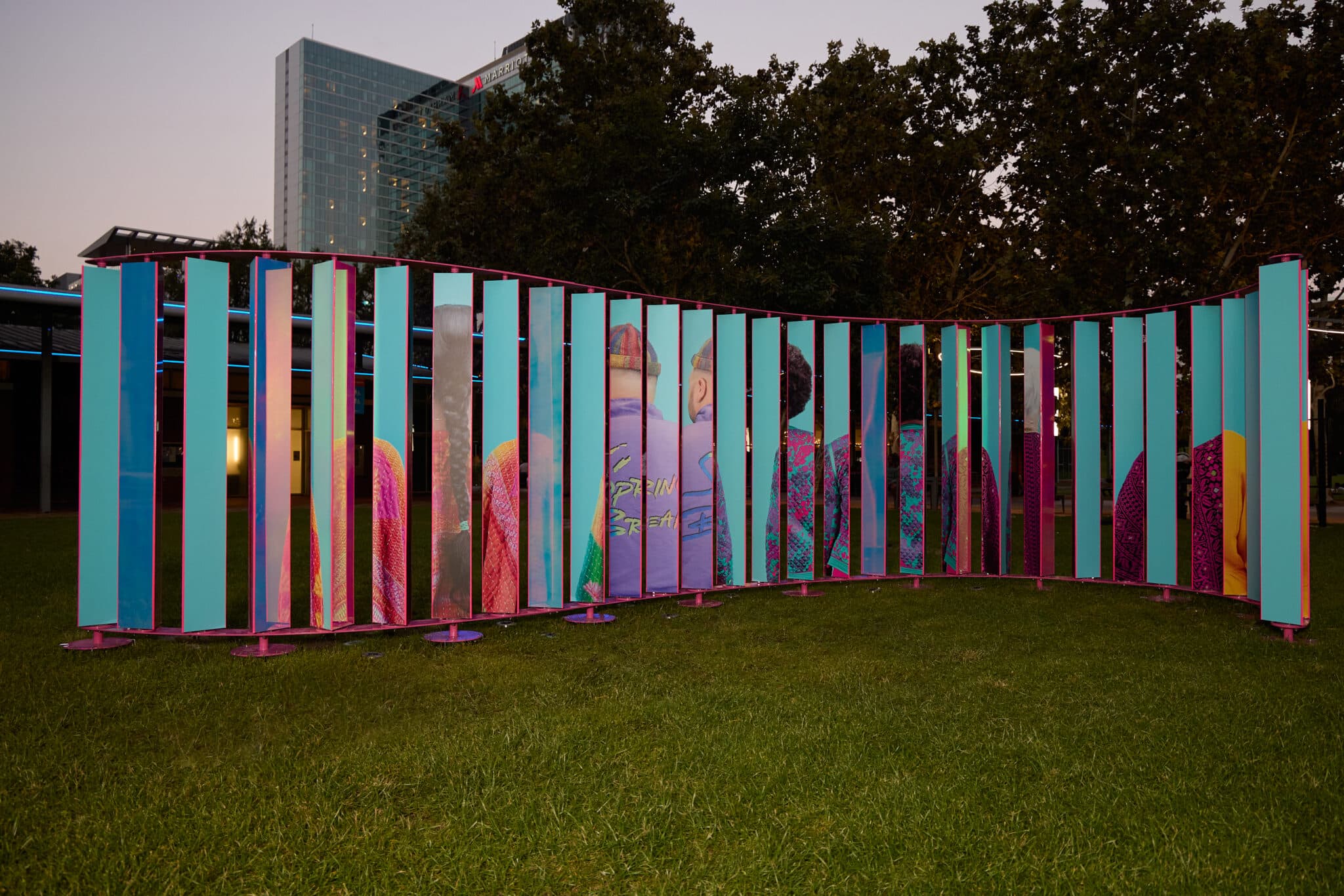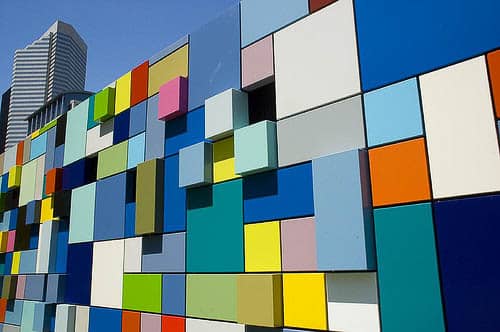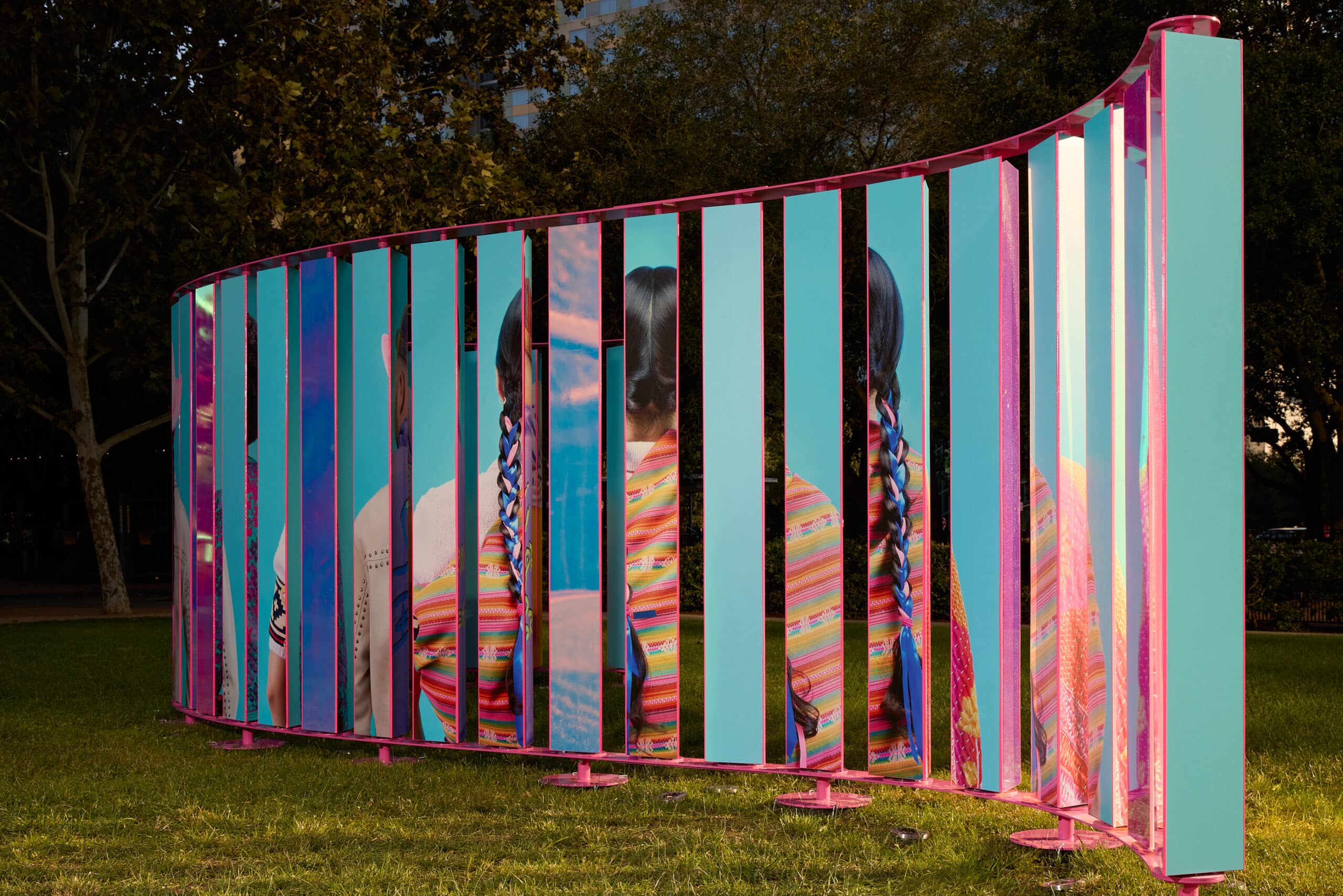By Holly Beretto
Discovery Green was built to be a place where art could thrive, so it was designed as a kind of public art project of its own. With green lawns, gardens and a sparkling lake set against a backdrop of downtown skyscrapers, the park is an oasis of beauty.
Park founders Maconda Brown O’Connor of the Brown Foundation and Nancy Kinder of Kinder Foundation joined forces with Houston’s other major philanthropic foundations including Houston Endowment, Inc, The Wortham Foundation and the City of Houston with Houston First. After numerous in-depth meetings with the public, the shape of Discovery Green developed.
The community wanted a greenspace that not only showcased Houston’s natural beauty, but the diversity of traditions that exist in the city. The vision was to include cultural programming and engaging artworks. Artists Margo Sawyer and Doug Hollis were brought onto the design team, and they produced three permanent works of art for the park: Synchronicity Boxes by Sawyer, The Listening Vessels and the Mist Tree by Hollis. Monument au Fantôme by French sculptor Jean Dubuffet was placed in the park before it officially opened in 2008. These pieces are now landmarks for public art in downtown Houston.
“From the beginning, public art and programming that represent Houston’s diversity and creativity were central to the vision for Discovery Green,” Kinder said. “The park isn’t just a beautiful greenspace — it’s a cultural hub and gathering place for all Houstonians.”
After the park opened, then Programming Director Susanne Theis invited Texan artists David Graeve, Dan Phillips and Andy Mann to lend their talents for pop-up installations in the park. These works created moments of surprise, wonder and discovery that encouraged exploration and quickly became integral to Discovery Green’s identity and role in the community.
In 2013, the Conservancy created a Public Art Committee. Art historian, curator, collector and then member of the Conservancy board Judy Nyquist was uniquely suited to take the role of committee chair. Under her leadership, along with Theis and then park President Barry Mandel, the Conservancy began commissioning large-scale public works from world-renowned artists such as Bruce Monroe, Michael Craig-Martin and Esrawe + Cadena.
“It’s so important to bring art to a wider public in a place that they feel safe and familiar,” Nyquist said of Discovery Green’s vital role in Houston’s art scene. “Instead of trying to walk into a museum or some other place that might feel a bit foreign, and potentially a little bit intimidating, it’s in a space that they feel comfortable in, and the bonus is that it’s free.”
Discovery Green offers many unique benefits in showcasing public art, she added. First, the park’s downtown location draws everyone from office workers in nearby skyscrapers to those attending events at the George R. Brown Convention Center or the Toyota Center. The park’s free public programming means it’s always active with people playing, exercising, walking their dogs or relaxing.
Art Lab was created as a groundbreaking pilot program to provide Houston artists the resources, contacts, and training to create large-scale public art installations. Through mentorship and hands-on experience, Art Lab fellows gained the practical skills necessary for these capital-intensive projects. Co-created and co-curated by Weingarten Art Group, Art Lab grew out of Discovery Green’s mission to shine a light on the diversity of arts and talents that enrich life in Houston. Beginning under the leadership of former President Mandel, it developed and flourished under the guidance of current President Kathryn Lott.
“Discovery Green’s Art Lab aims to reshape the landscape of public art by supporting the city’s professional artists and elevating their voices, ideas and vision at the national level,” said President Lott. “As the next evolution of the park’s public programming, it is ambitious and incredibly exciting.”
Houston has many talented artists, but public art installations are specialized, capital-intensive projects requiring expertise in engineering, manufacturing and complying with city codes. Art Lab gives Houston artists exposure to professional mentors and guidance on how to take a project from conception to proposal to finished piece. It provides support needed to create and exhibit their works.
After completing the program, inaugural Art Lab fellow Karen Navarro’s project, Chroma Collective, was selected for display. The piece’s interactive and reflective elements introduce new layers and possibilities for Discovery Green visitors who bring their own understanding of their community to the work. It’s an exciting proposition for Lea Weingarten, principal of Weingarten Art Group.
“Karen Navarro came into Art Lab ready to take the leap from her acclaimed photography practice into the realm of large-scale public art,” she said. “Chroma Collective reflects that transition beautifully – it is ambitious, interactive, and personal while also mirroring the diversity and energy of Houston itself.”
Nyquist agreed.
“I imagined grandmothers with toddlers talking together, manipulating the [piece’s] pillars, just engaging with each other physically, visually, emotionally and mentally,” she said. “I’m thrilled at the idea that this is going to really delight young people and engage all generations.”
Art Lab is just one of the hundred of events and attractions that Discovery Green produces year round. Free events that showcase diversity, culture, music, art and so much more, reflecting the values of our city. These events are made possible by the generous donations of of people like you. Through your efforts Discovery Green can continue to provide a beautiful oasis in the heart of downtown Houston where memories are made.
